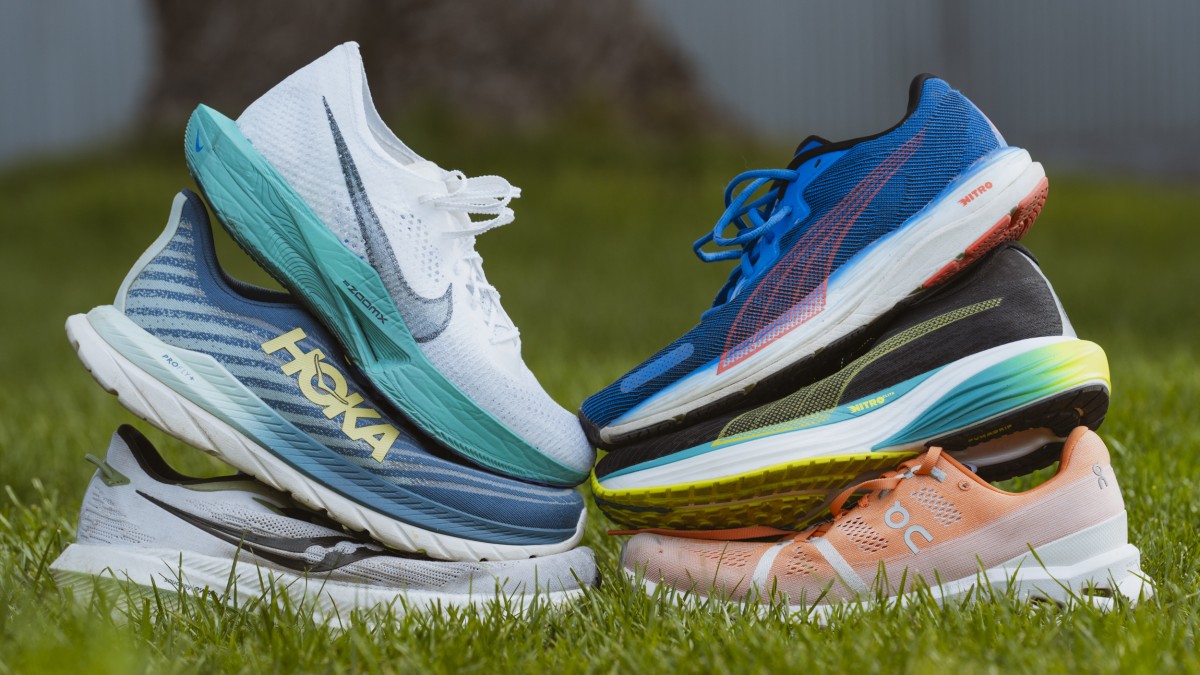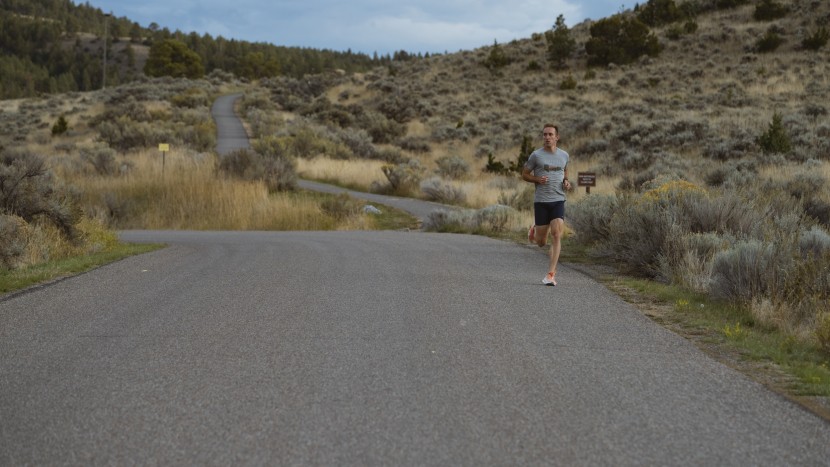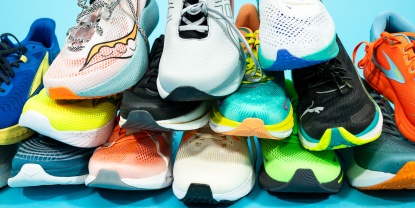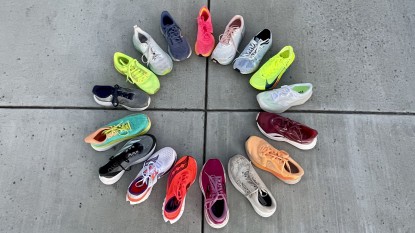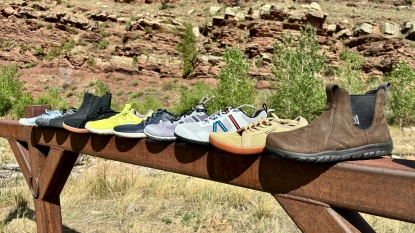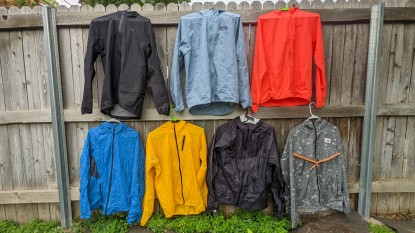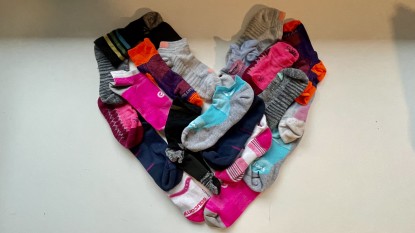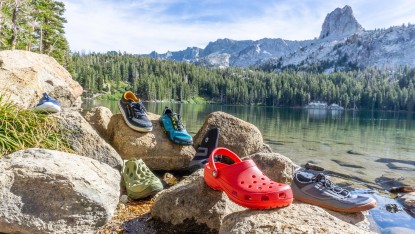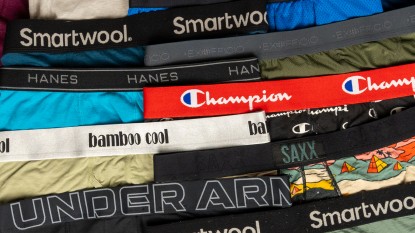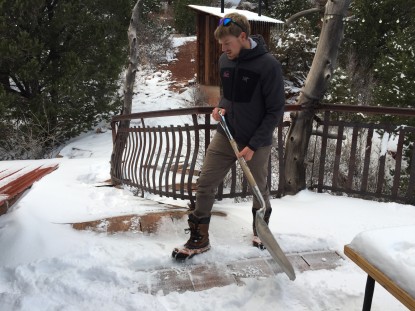So you're in the market for new running shoes? You're in luck. That's exactly what we do here. We take a deep dive into the market's top-ranked running shoes for men. No matter what you're looking for, we can point you in the right direction, whether it's something we've reviewed or not.
First, we'll walk you through the wide world of road running shoes and what makes them different from other types of athletic footwear. We get that it can be a lot; we're pretty nerdy when it comes to this stuff and still get overwhelmed with new features and models.
Then, we'll talk about how to decide what your individual needs in a shoe are. From there, we'll explain why you might want certain types of shoes for those needs and might want to avoid others.
This is a great place to start if you're new to running. If you're a seasoned veteran looking to branch out into new models, you might find some helpful info here as well!
What Kind of Shoe?
So you want a shoe to run in — great! What type of running will you be doing? Will most of your miles be on smooth pavement? Will you spend time on gravel or dirt trails and roads? Will you be using the shoes to train in a gym and only running for a few minutes at a time? Do you want to venture off into the mountains for hours on end? Some of everything? It's important to think about your intended use before moving on.
Really, there are three main types of shoes you can use for running: road, cross-training, and trail. Note we said can, not should. If you want the best performance and comfort, you should choose a shoe from the category that best suits your needs. So, let's break down what each category is optimal for.
Road Running
Road running shoes are designed for uni-directional movement on paved surfaces, along with forays onto dirt roads and gravel bike paths. They're designed to absorb the pounding of long miles on hard surfaces. That means they don't need great traction but do need strong durability. Modern road running shoes tend to have a decently high stack height (the thickness of the foam under your foot), which makes them a poor choice for activities like heavy lifting or sharp lateral movements. On the other hand, many modern road running shoes utilize extremely bouncy and soft foams that feel fantastic at a range of speeds, making those road miles very enjoyable.
Cross-Training
Cross-training shoes aren't great for running long distances. If your goal is to log the miles, we recommend getting a dedicated running shoe. On the other hand, if you'll only be running for a few minutes at a time or playing sports that involve lateral movements, jumping, or kicking, you'll be better served with a cross-trainer. These types of shoes provide the stability to handle those types of movements. They don't have the same levels of cushioning that road running shoes do, but they're better for a wider range of activities.
Trail Running
If you just will be running, but that running will be on semi-technical to technical trails, you should seek out a trail runner. Great trail running shoes are purpose-built to handle the poking and scraping of rough terrain, with enough grip to also handle loose surfaces and enough cushioning to protect your legs. They tend to be heavier than road running shoes because of how durable they are. You might find that these types of shoes also make great hiking shoes because of their feature set. Trail shoes also tend to have a wider platform than road shoes, allowing for a bit more confidence when landing on rocks. To be fair, you don't need trail shoes to run soft dirt paths; plenty of road shoes will do that. In our testing, we made sure to run a few miles on semi-technical trails in each shoe. It wasn't always the most enjoyable experience, though. Some shoes perform better than others. Once things start to get slippery or uneven, you'll likely want a trail shoe.
Selecting the Right Road Running Shoe
So you've decided a road shoe is right for you. Great! Now let's dig into what type of runner you are and what type of shoe you'll probably enjoy most.
First up, what type of running will you be doing? Will you be mostly running easy miles on smooth pavement? Do you plan on adding some faster workouts into your training week? Is this a shoe you want to wear for a race? If so, how long will the race be? Are you comfortable with just one pair, or do you want a few pairs with specific purposes? Remember your answers.
Next, let's think about your biomechanics and how you feel when you run. Do you tend to land on your heels or towards your mid/forefoot? Do you feel planted and stable as you run, or a little wobbly? Do you push off all the way through your toes on each stride, or do you pick your feet up a little earlier? Do you have a faster cadence or a longer stride?
Finally, let's think about what you enjoy. Do you want a soft and plush shoe that feels comfortable throughout the run? Do you want a snappy shoe that makes you feel fast? Or do you just want a no-nonsense shoe that gets the job done?
That's a lot of questions, but we ask them for a reason. Identifying what you need and want in a shoe tends to result in a better overall experience. Plus, new shoes that are drastically different from what you've worn before can cause injury if you do too much in them too quickly.
We think that's important enough to repeat: running injuries happen from doing too much of something too soon. That can mean doing too much intensity too soon. It can also mean doing too much running in a shoe that is drastically different from anything you've run in before (think going from a traditional running shoe to a minimalist design) too soon. Give your body time to adapt, and you'll reap the benefits over time.
When choosing a shoe, a great rule of thumb is if it feels comfortable, it will probably work well for you, and if it doesn't feel comfortable, move on. It sounds overly simple, but it's actually backed by science; studies have found that initial comfort is one of the best predictors of a successful shoe choice and at potentially reducing injury risk.
So, what should you look for when you're assessing comfort? Research has shown that you should look at a few things:- Does the heel feel comfortable under your foot?
- Does the forefoot feel comfortable under your foot?
- Does the shoe feel stable to you?
- Does the shoe feel comfortable overall, including how it holds the top of your foot?
- Does the front of the shoe feel flexible to you?
Obviously, this means you need to try shoes on. There are lots of ways to do that, from ordering a number of shoes online and returning some, to visiting a local running store.
That brings us to a new point: stability vs. neutral shoes.
For a long time, we were told there are two types of runners: neutral runners and stability runners. If you went to a running store for the first time, you'd get a gait analysis and be told you were an overpronator or a neutral runner. Then, you'd be shown the type of shoe that was “right” for you.
Fast forward to now, and the research and science of running have changed a lot. We now know that some levels of pronation are essential to healthy movement as a runner. We also know that putting beginning runners in stability shoes when they don't have a history of injuries to the lower leg can actually cause injury rather than prevent it. In fact, the need for stability shoes for the majority of runners is up for debate in current research.
So, let's go back to our comfort test! Even if you've been told you're a certain type of runner because of your arch shape or your foot's motion, we suggest trying on a range of shoes that have varying levels of stability and cushioning. If you have a history of pronation-related injuries to the lower leg, some level of stability will likely be good for you, but go with what feels good.
Types of Road Running Shoes
There are a dizzying array of shoes on the market with individual features and niches. We think it helps to categorize them into three broad categories: neutral daily trainer, stable daily trainer, and racing shoes.
Neutral Daily Trainer
This category makes up the biggest share of running shoes that are available today. These are shoes that don't make an effort to control your foot's natural movement through things like medial posting, varying foam densities, etc. Often, this means they're more flexible, although the introduction of plated daily trainers has changed that.
Within this category, there are a number of target purposes. Some models are designed to really do everything. These shoes tend to be a bit lighter and combine good cushioning with good responsiveness. These are shoes you'd be equally happy wearing on a workout or a long run.
Other models are designed to be comfortable and highly cushioned for most of your easy miles. They often have a thicker chunk of cushioning and a soft, plush ride to help absorb the impacts of your run. These shoes often struggle to handle faster paces but are great for the easy runs that make up the majority of training. You'll sometimes see these shoes called maximalist trainers in reference to their thick chunk of pillowy foam. We use these shoes for most of our miles.
Finally, some neutral daily trainers are designed with speed in mind. These tend to be light and responsive. Thanks to modern foams, they often have a very cushioned and bouncy ride. You'll often find some type of plate (carbon, nylon, plastic, etc.) in these shoes to aid in responsiveness. Varying degrees of rockers are also very common in these shoes. They can be used for easier runs but are really more enjoyable when going fast. If you're not used to the type of aggressive geometry that promotes a snappy toe-off, it can take some time to get used to. If you're new to running, we'd recommend staying away from shoes with plates or aggressive rockers. Your running economy is about adapting and finding what works best for your body. Adding a shoe with an aggressive geometry or plate can hinder that process. Think of these shoes as a treat to yourself for building the strength to run fast without help.
Stability Daily Trainers
Stability shoes are designed to reduce or control excess movement of the foot. As we mentioned earlier, their need is currently the subject of debate. In fact, increasing amounts of research suggests that for most runners, a rotation of two to three shoes is more effective at preventing injuries than stability shoes.
For a long time, stability shoes meant an uncomfortable and firm ride. Thankfully, in keeping with modern concepts of running mechanics, the firm foams, medial posting, and aggressive motion control of the past are disappearing in favor of more forgiving aids to your foot's natural motion.
If you've been running without injury in non-stability shoes, we don't recommend trying them. They can feel uncomfortable for many runners, particularly in the arch area. If you're new to running, we'd recommend trying a range of shoes on, including cushioned neutral daily trainers and some cushioned stability trainers, and choosing the shoe that feels most comfortable to you (unless you've specifically been told to seek out a stability shoe by a running-focused physiotherapist).
Racing Shoes
These are the fun and exciting shoes that get lots of attention. If you've ever heard of super-shoes, they fall into this category. In the past five years, increasing numbers of race shoes have featured a thick chunk of extremely lightweight foam and an aggressive rocker geometry combined with a carbon plate. These shoes are designed to improve running economy; studies have shown significant economy increases (typically between 1-4% for most runners) from wearing these shoes.
These shoes are great for the hardest efforts. But let's be very clear. They are not for daily training. They lack the stability and durability for easy runs and don't do well at slower speeds. That isn't to say you can't train in them. We use them for our hardest workouts as well as our races.
If you're purchasing a racing shoe, we think it's important to make sure your body adapts to the aggressive nature of the shoe over time. That means we wouldn't buy a race day shoe and never run in it before the race. Like anything else, too much too fast can lead to injury.
There are a variety of different racing shoes on the market. What distance you race and the surfaces you race on should factor into your choice, as well as your running mechanics. Finally, there is no rule against using a daily trainer in racing if you want to! We've done it before, and hundreds of thousands of runners each year do as well.
Conclusion
So you know what you need from a shoe, what your goals are, and what types of shoes are out there for you. Now what?
Check out our men's running shoes review and our article on how we tested each contender to learn more about some of our favorite shoes on the market and who we think they'll work well for. If you find a pair (or two or three) that you think you'll like, we really encourage you to try them on to make sure they're comfortable.
After that, happy miles!

